Details about the
landing
Several books indicate early mission timelines had
Buzz Aldrin rather than
Neil Armstrong as the first man on the Moon.[1]
Armstrong claims to have said "That's one small step for a
man, one giant leap for mankind" when he first set foot on the
lunar surface. The "a" is not clear in NASA recordings but the
audio and video links back to earth were somewhat intermittent,
partly because of storms near
Parkes Observatory. More recent digital analysis of the tape
by NASA revealed the "a" may have been spoken but obscured by
static.[2][3]
Neil Armstrong's PPK (Personal Preference Kit) carried a
piece of wood from the Wright Brothers' 1903 airplane's left
propeller and a piece of fabric from its wing,[4]
along with a diamond-studded
astronaut pin originally given to
Deke Slayton by the widows of the
Apollo 1 crew. This pin had been intended to be flown on
Apollo 1 and given to Slayton after the mission but following the
disastrous launch pad fire and subsequent funerals, the widows
gave the pin to Slayton and Armstrong took it on Apollo 11.[5]
In Aldrin's book Men from Earth he wrote, "We discovered
during a long checklist recitation that the ascent engine's arming
circuit breaker was broken off on the panel. The little plastic
pin (or knob) simply wasn't there. This circuit would send
electrical power to the engine that would lift us off the
moon...We looked around for something to punch in this circuit
breaker. Luckily, a felt-tipped pen fit into the slot."
Presidential
telephone call during moonwalk
LISTEN FOR YOURSELF
http://www.youtube.com/watch?v=YVmsCR2RmJU
President Nixon spoke to Aldrin and Armstrong during their
first walk on the surface of the moon.
Houston: ...We'd like to get both of you in the
field-of-view of the camera for a minute. (Pause) Neil and Buzz,
the President of the United States is in his office now and would
like to say a few words to you. Over.
Armstrong: That would be an honor.
Houston: All right. Go ahead, Mr. President. This is
Houston. Out.
Nixon: Hello, Neil and Buzz. I'm talking to you by telephone
from the Oval Room at the White House, and this certainly has to
be the most historic telephone call ever made. I just can't tell
you how proud we all are of what you (garbled). For every
American, this has to be the proudest day of our lives. And for
people all over the world, I am sure they, too, join with
Americans in recognizing what an immense feat this is. Because of
what you have done, the heavens have become a part of man's world.
And as you talk to us from the Sea of Tranquility, it inspires us
to redouble our efforts to bring peace and tranquility to Earth.
For one priceless moment in the whole history of man, all the
people on this Earth are truly one; one in their pride in what you
have done, and one in our prayers that you will return safely to
Earth. (Pause)
Armstrong: Thank you, Mr. President. It's a great honor and
privilege for us to be here representing not only the United
States but men of peace of all nations, and with interests and the
curiosity and with the vision for the future. It's an honor for us
to be able to participate here today.
Nixon: And thank you very much and I look forward....All of
us look forward to seeing you on the
Hornet on Thursday.
Aldrin: I look forward to that very much, sir.
Apollo 11 goodwill
messages
Apollo 11 Goodwill Messages were statements from leaders of 73
countries around the world on a disc about the size of a 50-cent
piece made of silicon that was left on the Moon by the Apollo 11
astronauts.
Contingency
television address
William Safire prepared a speech called In Event of Moon
Disaster for President Nixon to read on television if the Apollo
11 astronauts were stranded on the Moon.[6]
According to the plans, Mission Control would "close down
communications" with the LEM and a clergyman would have commended
their souls to "the deepest of the deep" in a public ritual
likened to
burial at sea. Presidential telephone calls to the astronauts'
wives were also planned. The speech originated in a memo from
Safire to Nixon's
chief of staff
H. R. Haldeman in which Safire suggested a protocol the
administration might follow in reaction to such a disaster.[7][8]
The last line of the prepared text contained an allusion to
Rupert Brooke's
First World War poem,
The Soldier.[8]
Acknowledgments and
monuments
The United States of America (U.S.) acknowledged the immense
success of Apollo 11 with a national day of celebration on Monday,
July 21, 1969. All but emergency and essential employees were
allowed a paid day off from work, in both government and the
private sector. Ironically the last time this had happened was the
national day of mourning on Monday, November 25, 1963 to observe
the state funeral of President
John F. Kennedy who had set the political goal to put a man on
the moon by the end of sixties.
A replica of the footprint left by Neil Armstrong is located
at Tranquility Park in
Houston, Texas. The park was dedicated in 1979, a decade after
the first moon landing.
Portrayal
in media
News
During the mission, another major news story in the US media
was the
Chappaquiddick incident.
Movies
and television
On
September 16,
1962,
the date Armstrong's selection as an astronaut was announced, his
parents were flown to New York to appear on the television game
show
I've Got A Secret. After their secret was guessed, host
Garry Moore commented "Wouldn't it be something if your son
were the first man on the moon?" The episode has been shown on
Game Show Network although Armstrong himself never saw it
until his biographer brought him a copy of the tape.
The
Australian movie,
The Dish (2000), tells the (slightly fictionalised) story of
how the images of the moon-walk were received by the
radio telescope at
Parkes Observatory,
New South Wales.
The 1996 television movie
Apollo 11 depicted the mission.[9]
Portions of the Apollo 11 mission are dramatized in the
HBO
mini-series
From the Earth to the Moon episode entitled
"Mare Tranquilitatis". In that episode,
Michael Collins made the following suggestion as to what
Armstrong should say upon stepping onto the lunar surface: "If you
had any balls, you'd say 'Oh, my God, what is that thing?' then
scream and cut your
mic."
In the British
sitcom
My Hero, the son of George and Janet chooses the name Apollo
11 (or Ollie for short) for himself because "It shows a link
between two worlds," his father George being an alien on the show.
In the American animated television series
Exosquad, the
Able Squad briefly visits Tranquility Base during and after
the Battle for the
Moon.[10]
The opening scenes of the 1996 movie
Independence Day[11]
show an alien mothership passing low over the Apollo 11 landing
site. The vibration of its passing erases the famous bootprint
left on the soft
lunar surface. (This is a scientific error, as the
the Moon's atmosphere, so thin it is often considered
nonexistent, is unable to transmit sound, vibration or pressure
waves.)
The
2008 animated film
Fly Me to the Moon in centered around a fictional story of
three
flies that stow away on the
Saturn V Rocket and manage to land on the moon.
Folklore
Soon after the mission a
conspiracy theory arose that the
landing was a hoax but this notion is widely discounted by
historians and scientists. It may have gained more popularity
after the movie
Capricorn One (1978) portrayed a fictional NASA attempt to
fake a landing on Mars.
An
urban legend suggests that they were being 'watched' while on
the Moon and had seen alien vehicles in space. This grew in
popularity after the book Someone else is on our Moon was
published.[12]
Aldrin did spot an unidentified object travelling relative to them
late in the third day of the mission. After learning from Mission
Control that it couldn't be the S-IVB stage, since that was 6,000
nautical miles away, they concluded that it was most likely one of
four panels that had linked the spacecraft and the upper stage.[13]
Later popular accounts often described this as a "UFO
sighting" or claimed the widely reported incident had been
"covered up."
At age 76, astronaut
Buzz Aldrin said in a television documentary, "There was
something out there, close enough to be observed, and what could
it be?... Now, obviously the three of us weren't going to blurt
out, 'Hey, Houston, we've got something moving alongside of us and
we don't know what it is, you know?... We knew that those
transmissions would be heard by all sorts of people and somebody
might have demanded we turn back because of aliens or whatever the
reason is."[14]
[15][16]
They may have seen the
Luna 15 spacecraft which the
Soviet Union had launched at about the same time as Apollo 11.[17]
There is a humorous and
ribald
urban legend that when Armstrong was a child, the wife of a
neighbour named Gorsky, when asked by her husband to perform
oral sex, had ridiculed him by saying "...when the kid next
door walks on the moon!" and then decades later whilst walking on
the moon Armstrong supposedly said "Good luck Mr. Gorsky" but
nothing about this anecdote is true. In 1995 Armstrong said he
first heard the story in California when comedian
Buddy Hackett told it as a joke.[18]
This urban legend quote has been used in a humorous reference at
the opening scene of
Watchmen (film).
References
-
^
Chaikin, Andrew (1998). A Man on the Moon.
Penguin Group.
ISBN 0-14-027201-1.
-
^
Adams, Cecil. "Did
astronaut Neil Armstrong muff his historic "one small step"
line?".
http://www.straightdope.com/classics/a3_362.html.
-
^ Mikkelson, Barbara &
David P.
"One Small Step" at
Snopes: Urban Legends Reference Pages.
-
^
Hansen, James R. (2005). First Man. p. 527.
- ^ Deke!: An
Autobiography,
Deke Slayton, p.191-2
- ^
"Scanned
copy of the "In event of moon disaster" memo".
The Smoking Gun.
http://www.thesmokinggun.com/archive/0808051apollo1.html.
- ^
Jim Mann (1999-07-07). "The
Story of a Tragedy That Was Not to Be".
L.A. Times. p. 5.
http://pqasb.pqarchiver.com/latimes/access/42983812.html?dids=42983812:42983812&FMT=ABS&FMTS=ABS:FT&type=current&date=Jul+7%2C+1999&author=JIM+MANN&pub=Los+Angeles+Times&edition=&startpage=5&desc=National+Perspective%3B+The+Story+of+a+Tragedy+That+Was+Not+to+Be.
Retrieved on 2007-10-27.
- ^
a
b
William Safire (1999-07-12). "Essay;
Disaster Never Came".
New York Times.
http://query.nytimes.com/gst/fullpage.html?res=9B0CE2D7103CF931A25754C0A96F958260.
Retrieved on 2007-10-27.
- ^
Apollo 11 at the
Internet Movie Database
- ^
Danner, Patrick. "Exosquad
episode 2.34 summary". The ExoSquad Universe.
http://www.stwing.upenn.edu/~pdanner/exo/eps/smallstp.html.
Retrieved on 2006-08-27.
- ^
Independence Day at the
Internet Movie Database
-
^
"LunarAnomalies.com".
http://www.lunaranomalies.com/.
-
^
"UFOs
and Aliens in Space".
http://www.csicop.org/si/2009-01/morrison.html.
- section 6.40
- ^
"Buzz
had to fix Moon Lander with Biro".
http://www.mirror.co.uk/news/tm_objectid=17435778&method=full&siteid=94762&headline=nearly-one-small-step-too-far--name_page.html.
- ^
"Man
on Moon : we saw a UFO".
http://www.dailyrecord.co.uk/news/tm_objectid=17435592&method=full&siteid=66633&headline=man-on-moon--we-saw-a-ufo--name_page.html.
- ^
Mike Swain, Science Editor 24/07/2006 (2006-07-24). "BUZZ
HAD TO FIX MOON LANDER WITH BIRO" (HTML). News.
mirror.co.uk.
http://www.mirror.co.uk/news/tm_objectid=17435778&method=full&siteid=94762&headline=nearly-one-small-step-too-far--name_page.html.
Retrieved on 2007-12-22.
- ^
"Apollo 11".
Modern Marvels (The History Channel).
-
^ Mikkelson, Barbara &
David P.
"Good luck, Mr Gorsky!" at
Snopes: Urban Legends Reference Pages.
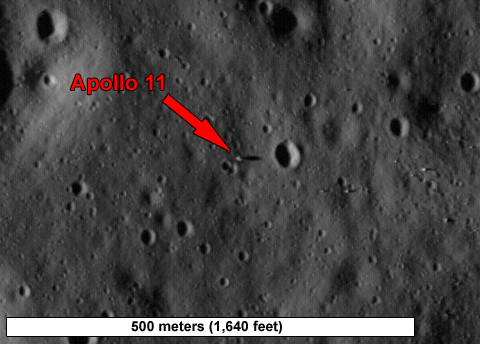
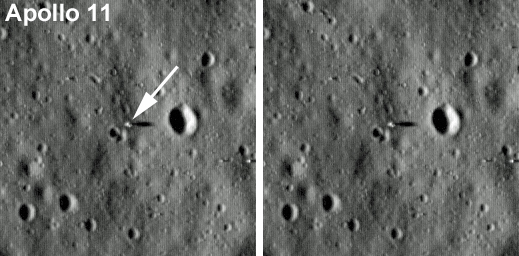
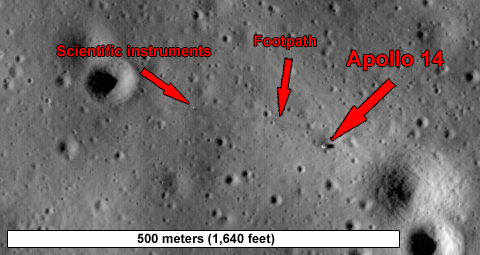
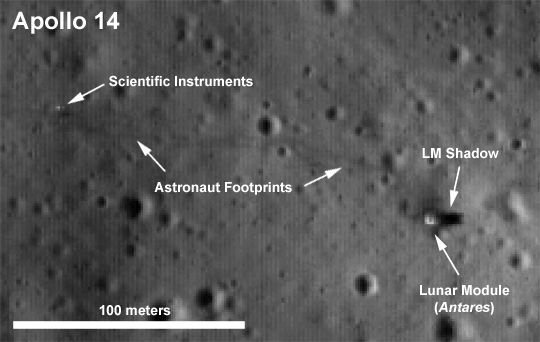
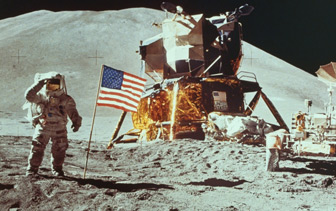
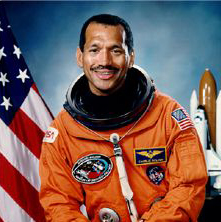 Bolden,
62, is a former Marine Corp pilot who flew over 100 combat
mission in Vietnam and eventually rose to the rank of major
general before retiring from the service in 2003.
Bolden,
62, is a former Marine Corp pilot who flew over 100 combat
mission in Vietnam and eventually rose to the rank of major
general before retiring from the service in 2003.